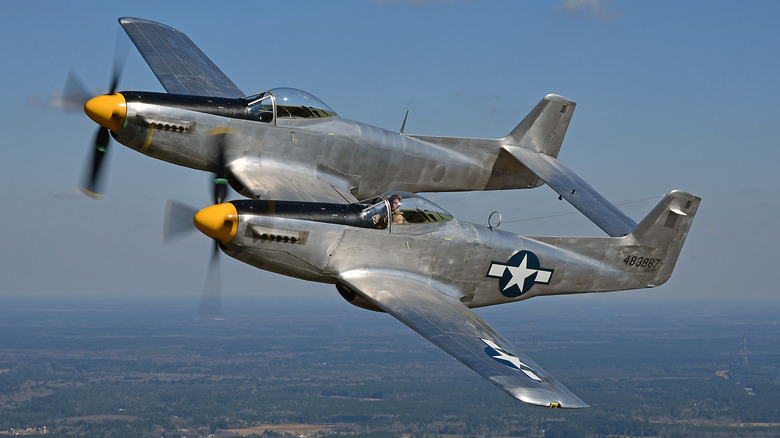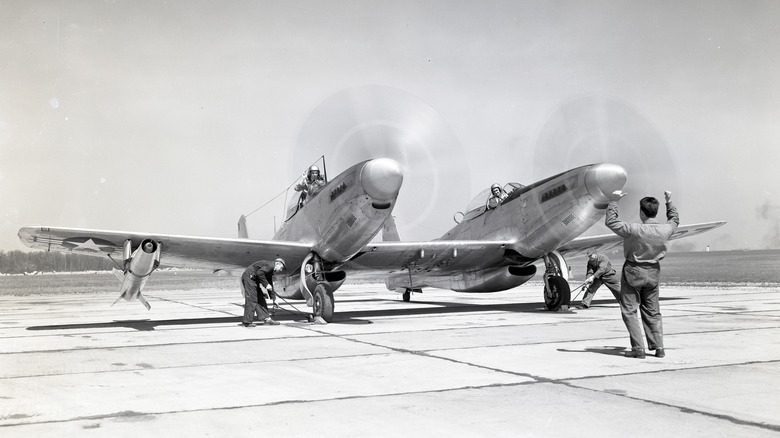The F-82 Twin Mustang Is An Incredible And Ultra Rare Night Fighter Plane
To clear up confusion from the outset, North American Aviation's Twin Mustang was known by three different designations. It was labeled as the P-82 when it first came off the production line, but in National Advisory Committee for Aeronautics (NACA) logs, it was referred to as XF-82. Then, in 1948, it was renamed the F-82. Clear as mud? Well, let's muddy it a little further. Several different versions were made, from the P-82E, P-82F, to the P-82G.
The P-82 was initially developed as a protection fighter plane capable of escorting the big, high-altitude B-29 "Superfortress" heavy bombers on long-range missions — something previous short-range fighters couldn't handle. According to the U.S. Air Force Museum, the Twin Mustang had a range of just above 2,200 and a top speed of 400 mph.
To accommodate the long-range nature of the missions while mitigating pilot fatigue, North American devised a new kind of twin boom plane that seated not one but two pilots, each of whom could control the aircraft from their respective cockpits located in each fuselage. This design allowed one pilot to sleep while the other flew the plane and vice versa.
It's a bird... it's a plane... it's a Twin Mustang!
Despite looking like two P-51 Mustangs welded together, in reality, it was an entirely new design, far removed from previous twin boom craft (i.e., P-38 Lighting). Mainly, it required designing a plane where both pilots were offset from the aircraft's center line.
Underwing hardpoints allowed the plane to carry thousands of pounds of bombs, High Velocity Aircraft and air-to-surface rockets, and even external fuel tanks to further its range. One sortie would have it flying as a long-range escort or reconnaissance plane, while the next as an attack bomber, rocket fighter, or interceptor.
Ironically, the Twin Mustang never saw any actual World War II combat because North American Aviation couldn't deliver any planes until early 1946, when the war was already over. However, its adaptability let it flourish during the Korean War and became the first American plane to shoot down North Korean aircraft — three to be exact — on June 27, 1950.
While 500 of the P-82s were ordered, North American only made about 250. The P-82 Twin Mustang was the last American piston-engine and propeller-driven fighter purchased by the Air Force.

